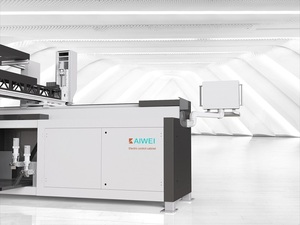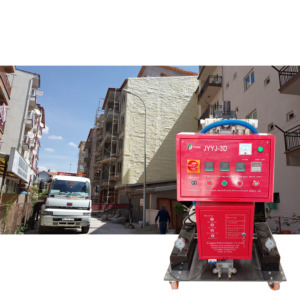
All categories
Featured selections
Trade Assurance
Buyer Central
Help Center
Get the app
Become a supplier

(8221 products available)




























polyurethane foaming injection are essential machines in the realm of plastic and rubber processing, specifically designed to manufacture foam products with precision and efficiency. These machines play a crucial role in transforming raw materials into diverse foam products used across various industries, including automotive, packaging, furniture, and construction. The versatility and adaptability of polyurethane foaming injection make them indispensable in the industrial machinery sector, offering solutions for product development and mass production. With technological advancements, these machines have evolved to deliver enhanced performance, sustainability, and customization capabilities.
The world of polyurethane foaming injection encompasses a wide array of machine types, each tailored to specific manufacturing needs. Common types include foam cutting machines, foam molding machines, and foam extrusion machines. Foam cutting machines are designed for precision slicing of foam blocks into desired shapes and sizes, utilizing technologies such as CNC (Computer Numerical Control) for accuracy. Foam molding machines are used to create complex foam shapes through processes like injection molding, offering flexibility in design and material usage. Foam extrusion machines, on the other hand, focus on continuous production of foam products by forcing raw materials through a die, forming consistent profiles. Each type of polyurethane foaming injection is engineered to optimize production efficiency and product quality.
polyurethane foaming injection boast a range of functions and features that cater to diverse manufacturing demands. These machines are equipped with advanced control systems to regulate temperature, pressure, and material flow, ensuring the production of high-quality foam products. Features such as automatic material feeding, precise cutting mechanisms, and customizable molding options enhance operational efficiency and product consistency. Additionally, many polyurethane foaming injection incorporate energy-saving technologies and ergonomic designs, reducing operational costs and enhancing user convenience. The ability to produce foam with varying densities and textures further extends the application possibilities of these machines across different industries.
The production process of foam products using polyurethane foaming injection involves a variety of materials and ingredients, primarily polymers such as polyurethane, polystyrene, and polyethylene. These polymers are selected based on the desired properties of the final foam product, such as flexibility, durability, and thermal insulation. Additives like blowing agents, stabilizers, and colorants are incorporated to modify the foam's characteristics, enhancing its performance and aesthetic appeal. For example, blowing agents are crucial in creating the cellular structure of foam, while stabilizers ensure the material retains its shape and integrity over time. The choice of materials and ingredients plays a pivotal role in determining the quality and functionality of the foam products produced by polyurethane foaming injection.
To maximize the benefits of polyurethane foaming injection, it is important to understand their operational capabilities and maintenance requirements. Proper installation and calibration are essential to ensure optimal performance and product quality. Operators should be trained to handle the machine's complex control systems, adjusting parameters as needed to accommodate different foam products. Regular maintenance, including cleaning and inspection, is crucial to prevent mechanical failures and extend the machine's lifespan. Additionally, selecting the right type of polyurethane foaming injection based on production volume and material specifications can significantly enhance efficiency and reduce waste. Embracing technological advancements, such as automation and data analytics, can further optimize the use of these machines, leading to improved productivity and innovation in foam manufacturing.
When selecting polyurethane foaming injection, it's important to consider the specific requirements of your production process. Start by evaluating the types of foam products you intend to manufacture and the materials you will be using. Different machines cater to various materials such as polyurethane, polyethylene, or polystyrene, each with unique processing needs. It's essential to choose machinery that aligns with your material specifications to ensure efficient production and high-quality output. Additionally, consider the production capacity of the machine, as this will directly impact your ability to meet demand and scale your operations.
Another crucial factor is the technological features integrated into polyurethane foaming injection. Modern foam machinery often includes advanced control systems, automation capabilities, and energy-efficient designs. These features can significantly enhance productivity and reduce operational costs. Look for machines with user-friendly interfaces and customizable settings that allow for easy adjustments and fine-tuning of the production process. Furthermore, consider the machine's compatibility with Industry 4.0 technologies, such as IoT connectivity and data analytics, which can provide valuable insights into production efficiency and maintenance needs.
The physical footprint and ergonomic design of polyurethane foaming injection should also be taken into account. Depending on your facility's layout and space constraints, you may need to opt for compact machines that fit seamlessly into your production line. Ergonomically designed machinery can improve operator comfort and safety, reducing the risk of workplace injuries and enhancing overall productivity. Additionally, consider the machine's noise levels and environmental impact, as these factors can influence the working environment and align with sustainability goals.
Regular maintenance of polyurethane foaming injection is essential to ensure longevity and consistent performance. This includes routine cleaning to prevent material buildup, lubrication of moving parts to reduce wear and tear, and periodic inspections to identify potential issues early. Keeping a maintenance log can help track servicing schedules and any repairs made, ensuring the machine operates at peak efficiency.
Foam cutting machines are designed for precision slicing of foam materials into specific shapes and sizes, often utilizing CNC technology for accuracy. In contrast, foam molding machines create complex shapes by injecting material into molds, allowing for greater design flexibility and the production of intricate foam products. The choice between these machines depends on the desired end product and production requirements.
Yes, polyurethane foaming injection can support sustainable production practices by incorporating energy-efficient technologies and utilizing eco-friendly materials. Machines with low energy consumption and waste reduction capabilities can minimize environmental impact. Additionally, selecting materials that are recyclable or biodegradable can further enhance the sustainability of the foam production process.
Additives in polyurethane foaming injection play a significant role in modifying the properties of foam products. Blowing agents create the cellular structure, while stabilizers enhance durability and shape retention. Colorants and other additives can improve the foam's aesthetic appeal and performance characteristics, allowing for a wide range of applications and customization options.
Automation in polyurethane foaming injection can streamline production processes, reduce manual labor, and enhance precision. Automated systems can manage material handling, cutting, and molding with minimal human intervention, leading to increased efficiency and consistency. By integrating data analytics, manufacturers can also gain insights into production trends and optimize operations for better output and reduced downtime.